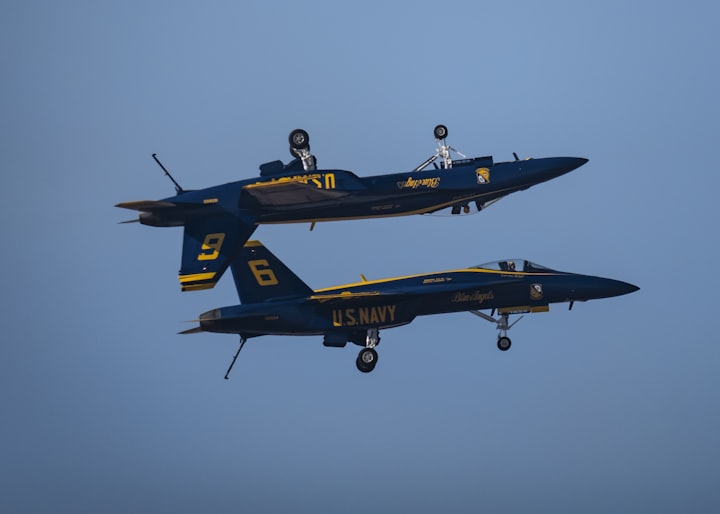
The First Planes
The first planes of aviation or aircraft were developed by the Wright Brothers also knows as Orville Wright and Wilbur Wright. The first flight was on December 17, 1903, in the city of Kitty Hawk, North Carolina. The First Plane was the Wright Flyer and soon more followed.
Wright Flyer

This Was the first version of the Wright Flyer Planes. This plane was powered by two eight-foot diameter propellers that pushed (rather than pulled) the airplane forward. They were made of laminated spruce and a sprocket-driven bicycle chain drove them. Power was supplied by a twelve-horsepower, four-cylinder, homemade engine -- the first internal combustion engine to be made of cast aluminum.
This plane lasted only 59 seconds (MAX out of all four tests) with was short compared to the "average 5+ hours of today's passenger planes. But still traveled 36 meters or 120 feet with was pretty long for a 30mph plane. The best flight of the four flights that day, with Wilbur controlling, the plane covered 255.6 m (852 ft) in 59 seconds.
Note: to future readers when aviation is advanced do not email spam me of wrong content because your planes will probably do at least a few days flying at a decent speed without running out of fuel.
Details of this plane
- 40.3 ft (12.2 m) wingspan.
- 0.83 ft (25 cm) anhedral.
- 6.5 ft (198 cm) chord.
- 6.2 ft (189 cm) separation.
- 510 sq ft (47.4 sq. m) wing area.
- 1:20 camber.
- 48 sq ft (4.6 sq m) double front elevator (referred to as "horizontal rudder" by the Wrights.
- 21 sq ft (1.9 sq m) twin movable vertical rear rudders.
Following this plane were the Wright Flyer III, Wright Flyer II, 1902 Wright Glider. There were more versions later.
Wright Flyer III
The Wright Flyer III was the third powered aircraft by the Wright Brothers. It was built during 1904–1905. Orville Wright made the first flight with it on June 23, 1905. The Flyer III had an airframe of spruce construction with a wing camber of 1-in-20 as used in 1903, rather than the less effective 1-in-25 used in 1904. The new machine was equipped with the engine and other hardware from the scrapped Flyer II and, after major modifications, achieved much greater performance than Flyers I and II.
- Details of this plane
- Top speed: 35 mph
- Range: 25 mi
- Manufacturer: Wright Company
- Engine type: Inline engine
- First flight: June 23, 1905
- Designer: Wright brothers
Wright Flyer II
The Wright Flyer II was the second aircraft built by Wilbur and Orville Wright. In 1904 they used it to make a total of 105 flights, ultimately achieving flights lasting five minutes and also making full circles, which was accomplished by Wilbur for the first time on September 20.
- Introduced: 1904
- Range: 5 mi
- Engine type: Reciprocating engine
- Manufacturer: Wright Company
- Designer: Wright brothers
- Developed into: Wright Flyer III
Wright Flyer I
The Wright Flyer was the first successful heavier-than-air powered aircraft. Designed and built by the Wright brothers, they flew it four times on December 17, 1903, near Kill Devil Hills, about four miles (six kilometers) south of Kitty Hawk, North Carolina. Today, the airplane is exhibited in the National Air and Space Museum in Washington D.C. The U.S. Smithsonian Institution describes the aircraft as the first powered, heavier-than-air machine to achieve controlled, sustained flight with a pilot aboard. The flight of the Wright Flyer marks the beginning of the pioneer era of aviation.

I hope you found this useful for your history education study please buy me a coffee (donate 3$ or more enough for a coffee) and give this a like many thanks!
And have some doughnuts for the people who loved this article.
🍩🍩🍩🍩🍩🍩🍩🍩🍩🍩🍩🍩🍩🍩🍩🍩🍩🍩🍩🍩🍩🍩🍩🍩
About the Creator
Jason
I am a writer duh...






Comments
There are no comments for this story
Be the first to respond and start the conversation.